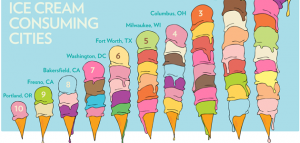Online content demands more than just sprinkling keywords and churning out unique insights. The battle for reader engagement expands to how easily your audience can understand your content.
While a consistent focus on readability can be the key to securing your spot at the top of SEO rankings, how can “readability” be quantified?
The Flesch Reading Ease score is the tool that does just that. Its algorithm formula estimates how easily your audience will understand your text.
Let’s explore the relevance of the Flesch Reading Ease score in 2024 and provide tips on how it can help you. This readability index is no longer an optional accessory but a fundamental pillar of successful content strategy.
- What Is the Flesch Reading Ease Score?
- How To Check the Flesch Grade Level
- What Is the Ideal Readability Score?
- Does the Flesch Reading Ease Score Still Matter in 2024?
- Improve Your Flesch Reading Ease Score With Expert Writers
What Is the Flesch Reading Ease Score?
Rudolf Flesch invented the Flesch Reading Ease score in the 1940s. It is a vital tool for determining the readability of English-language content. This score accurately predicts how well your audience will comprehend your message and their user experience.
The score is calculated by assessing the content’s sentence and word length. Short sentences with shorter words receive a higher score, indicating that the content is simpler and easier to read. On the contrary, longer sentences with longer words receive lower scores, indicating that the content may be more suited for advanced readers.
The actual formula for calculating the Flesch Reading Ease score is as follows:
206.835 – 1.015 x (total words / total sentences) – 84.6 x (total syllables / total words)
For example, a score above 100 implies that the content is extremely simple, while a score between 60-70 is ideal for readers at an 8th or 9th-grade reading level. Scores between 0-30 suggest that the content would be more suitable for university-level reading.
You can interpret the scores according to this table:
| Score | Corresponding School Level (U.S.) | Reading Difficulty |
| 90–100 | 5th grade | Extremely easy to read |
| 80–90 | 6th grade | Conversational English for consumers |
| 70–80 | 7th grade | Quite easy to read |
| 60–70 | 8th and 9th grade | Easily understood by 13- to 15-year-old students |
| 50–60 | 10th to 12th grade | Somewhat difficult to read |
| 30–50 | College | Difficult to read |
| 0–30 | College graduate and Professional | Extremely difficult to read |
The maximum readability score attainable is 121.22, but this can only be reached if every sentence consists solely of one-syllable words. The score has no theoretical lower limit, meaning it can decrease indefinitely based on the words’ complexity.
How To Check the Flesch Grade Level
In addition to the Flesch Reading Ease formula, various online tools can effortlessly calculate your content’s readability score.
Character Calculator
Character Calculator calculates the Flesch Reading Ease score and other readability scores like the Gunning Fog Index, Dale-Chall, and SMOG readability. It also provides the text’s reading time, speech time, and unique word count.
Yoast SEO
An essential plugin for WordPress, Yoast SEO provides a comprehensive readability analysis report. It evaluates active vs. passive voice, sentence structure, paragraph length, transition words, and subheading distribution. You’ll receive a Flesch Reading Ease score, rated on a color-coded scale. Green denotes good readability, yellow needs improvement, and red requires significant revisions.
Copywritely
Designed for search engine optimizers, Copywritely offers a readability score and checks for potential SEO issues. Its readability checker uses the Flesch-Kincaid formula, which differs from the Flesch Reading Ease score, helping you identify and rectify dense content.
What Is the Ideal Readability Score?
The Flesch Reading Ease score is a powerful tool for gauging the accessibility of your written content. So, what score should you aim for?
The “ideal” readability score depends on your audience. However, a good benchmark to aim for is a score of 60 or above, equivalent to an 8th-grade reading level. This level generally indicates that your content is relatively easy to understand.
You may aim for a lower score if your audience consists of professors or a highly technical field. An average audience may need help understanding content with a lower score.
There are several strategies you can use to improve your content quality and Flesch Reading Ease score:
Shorten Your Sentences
Long sentences can be hard to follow, whereas short sentences keep your content clear and concise. Breaking down long sentences into shorter ones makes your text easier to read and more digestible for your audience.
Break up your text using headers, bullet points, and shorter paragraphs. This method makes your text easier to read and helps readers digest the information.
Reduce the Number of Difficult Words
Avoid jargon and, when necessary, substitute more common, well-known words in your text. For instance, instead of “utilize,” choose “use.”
Avoid unnecessary words or phrases that can make your text more confusing. Ensure each of your sentences contains only one thought or idea.
Write for Your Audience
Always consider who you are writing for. Your text should be accessible to as many people as possible. You’re not just writing for an SEO score. You’re writing for real people who will read your content. Don’t chase “perfect scores” — write meaningful content that adds value to your industry and resonates with your audience.
Does the Flesch Reading Ease Score Still Matter in 2024?
Readability in 2024 is vital for user experience and SEO. It is a cornerstone of a sound content marketing strategy. Google’s algorithms have become more human-like, making high-quality, straightforward content a critical factor in ranking.
According to 2011 Florida statutes, title XXXVII, chapter 627, section 4145, an insurance policy is considered readable if it scores at least 45 on the Flesch reading ease test. No one likes to read insurance policies.
If people cannot understand the words they are reading, they are more likely to leave the site. Posting text with poor readability scores will likely increase bounce rates and reduce dwell time, negatively impacting SEO.
Quality, readable content can enrich the user experience and search engine ranking, suggesting the Flesch Reading Ease score is still relevant in 2024.
Improve Your Flesch Reading Ease Score With Expert Writers
While the Flesch Reading Ease score is a helpful guideline to evaluate your content, it isn’t a one-size-fits-all solution. Writing compelling content is an art that surpasses the numerical score it gets. Your style, audience, and industry’s unique language are just as important. The goal isn’t a great score but clarity and accessibility of the message for your audience.
Now, you also can access perfect blogs balanced for ease of reading and providing great, human-generated facts when you partner with writers from WriterAccess. They are experienced at following the best readability writing practices. Start a 14-day free trial today and supercharge your content strategy!








